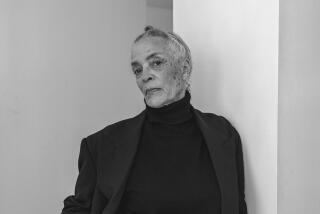LA CIENEGA AREA
- Share via
Jene Highstein’s immense mound of metal at Count Panza’s villa in Varese, Italy, may be his scariest sculpture. It all but fills a room, forcing visitors to slink around the dark mass and worry that they’re in the company of Fat Boy.
No such fears arise from a current show of his work, though the gray concrete piece in the first gallery bears a certain resemblance to bombs and submarines--and to friendly whales. Mostly, though, it makes you wonder how this 20-or-more-foot elongated oval (floating above an attached pedestal) got into the long, narrow gallery. That question is not entirely beside the point, because the apparent weightiness and even the gently rounded shapes of Highstein’s sculpture contribute to a startling presence. For all the familiarity of such reductive abstraction, the best of it is still astonishing.
Subsequent galleries each hold a group of three or four smaller sculptures. Black-and-white plaster pieces suggest water-smoothed rocks or, in one case, a towering figure. Massive wood forms with sanded or chiseled surfaces loom forward or open upward, like flowers. A bulbous, upturned stump of a palm (with shaved roots and impacted earth) stands in the center of the last gallery, accompanied by two brick mounds whose rounded contours contradict their rectangular modules and mortared construction.
This is a handsome exhibition, but what’s most impressive is its demonstration of Highstein’s range, both in materials and feeling. An American who’s better known in Europe than at home, he’s a Minimalist who has retained a human touch, a rigorous artist who isn’t hung up on confrontation. (Flow Ace Gallery, 8373 Melrose Ave., to July 5.)
More to Read
The biggest entertainment stories
Get our big stories about Hollywood, film, television, music, arts, culture and more right in your inbox as soon as they publish.
You may occasionally receive promotional content from the Los Angeles Times.










